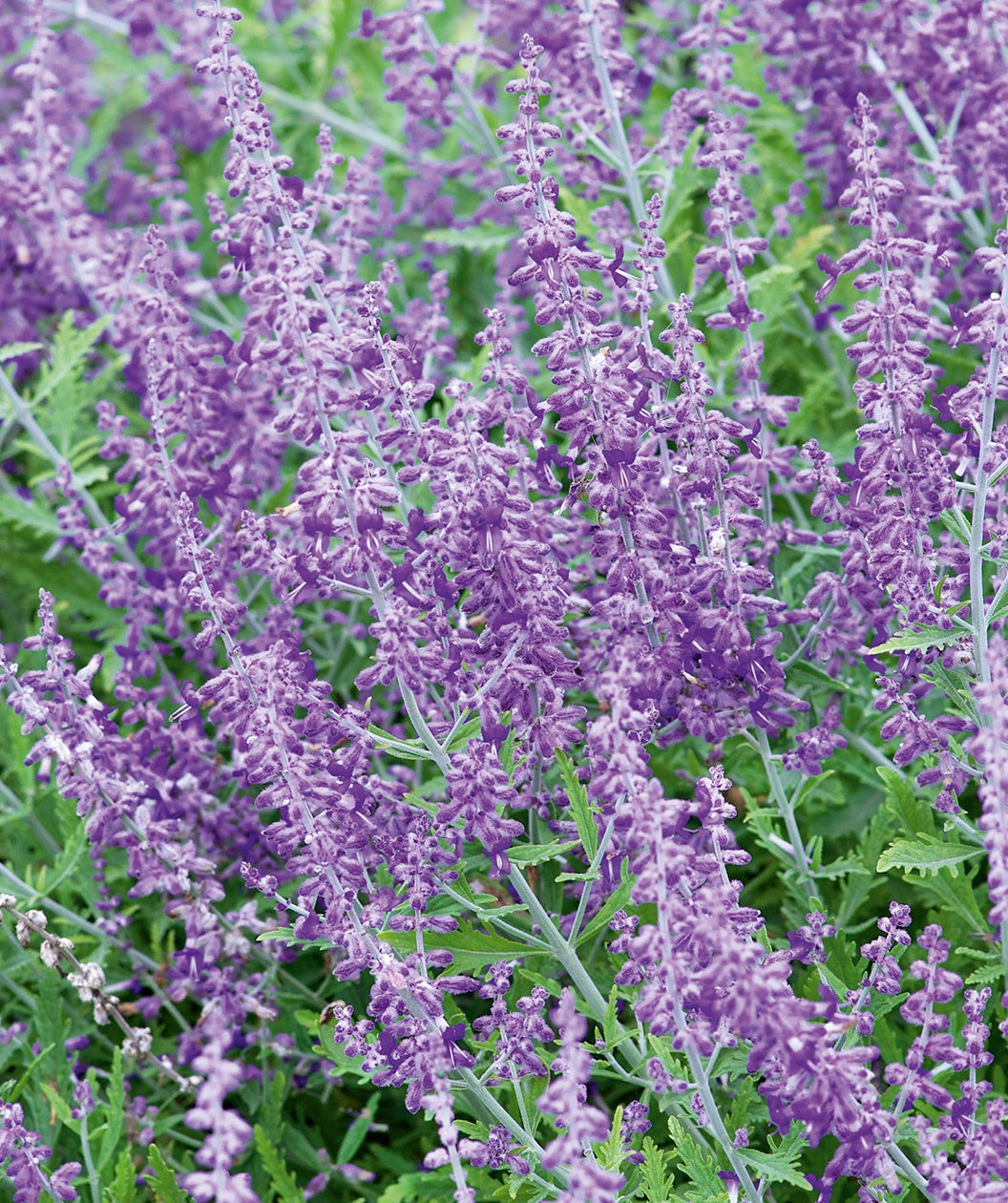LONG PURPLE BLOOMS WITH LIGHT GREEN FOLIAGE
FEATURES:
- Lavender-purple blooms cover the plant in summer
- Foliage is a feathery, silver-green leaf on a silver stem
- Low maintenance and drought tolerant
- A member of the mint family, the foliage offers a delicate scent
-
Deer and pest resistant
- Hand Selected, Fresh from the Grower
- Ships in a plant-safe designed box
Growth Facts
- Hardiness Zone: 5-9
- Mature Height: 3-5' tall
- Mature Width: 2-4' wide
- Exposure: Full Sun
- Spacing: 2-4' apart
LONG PURPLE BLOOMS WITH LIGHT GREEN FOLIAGE
FEATURES:
- Lavender-purple blooms cover the plant in summer
- Foliage is a feathery, silver-green leaf on a silver stem
- Low maintenance and drought tolerant
- A member of the mint family, the foliage offers a delicate scent
-
Deer and pest resistant
- Hand Selected, Fresh from the Grower
- Ships in a plant-safe designed box
Growth Facts
- Hardiness Zone: 5-9
- Mature Height: 3-5' tall
- Mature Width: 2-4' wide
- Exposure: Full Sun
- Spacing: 2-4' apart
Why plant Russian Sage?
Is there a Spirit that will work harder than Russian Sage to liven up your entryway garden, foundation beds, or patio plantings? Nyet! We don’t think so. This overachiever grows quickly to become a shrubby perennial that is smothered in lavender-blue blossoms for months. Few Spirits can boast such an amazingly long bloom time. The soothing flowers—so easy on the eyes—go with everything in your landscape, whether you favor a color scheme of hot red, orange and yellow, or you’re more a fan of pastels. To top it all off, Russian Sage’s silvery green foliage provides the perfect foil for its light purple blooms.
Russian Sage isn’t really Russian. It’s actually native to western China, Pakistan, Afghanistan, Iran, and Turkey. It’s called Russian because its Latin name is Perovskia, after a 19th century Russian count and general, Vasily Perovsky. Russian Sage was discovered around 1840, and it became valued as a garden plant soon afterwards. Not only is it beautiful, but it’s resilient and easy to grow as well. In the U.S., Russian Sage was one of the first plants to be chosen as Perennial Plant of the Year by the Perennial Plant Association. It received the honors in 1995.
How to use Russian Sage in the landscape?
Calling all pollinators! All summer and into autumn, Russian Sage’s tiny flowers will attract butterflies to your garden, along with many other happy pollinators. Find out for yourself what the fuss is about—the sweet-tasting blossoms are edible, and you can throw a few on your salad.
Planting Zones
Hardiness Zone: 5-9
How To Plant Russian Sage
Tough love. Don’t give your Russian Sage protection from the sun or too much water or fertilizer. This easy-care Spirit wants full sun and lean, sharply drained soil. Russian Sage is generally disease-free, and its aromatic leaves make it unpalatable to deer, rabbits, and other varmints.
How To Water
Water as soon as they arrive! Sage plants need to be watered regularly to maintain evenly moist soil for proper establishment in the landscape.
How To Fertilize
In early spring, it's best to give your plant a dose of fertilizer to encourage healthy growth. We recommend using our Elements Starter Plant Food.
How To Prune
Feel free to trim your plant in summer to shape it or to remove spent flower stems, but hold off from pruning in the fall—leave it standing over the winter. Wait until green buds appear in spring and then cut the plant back to just a few inches above the buds.





